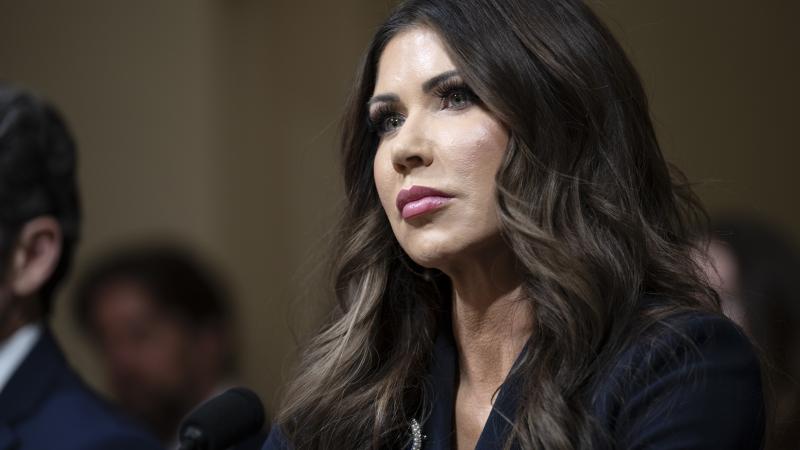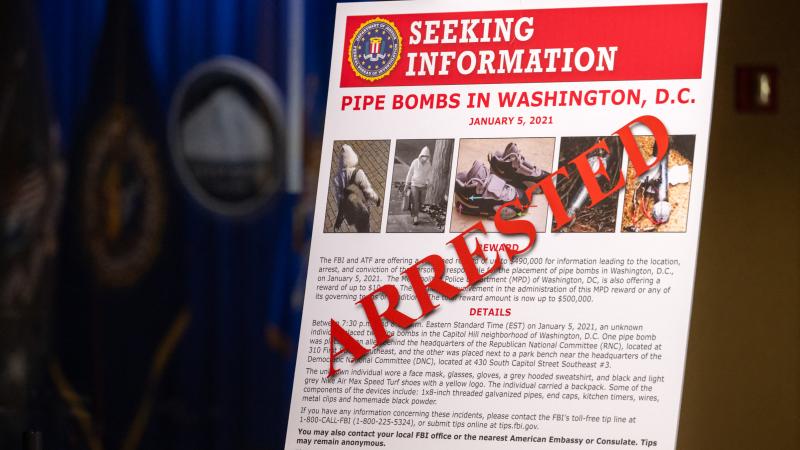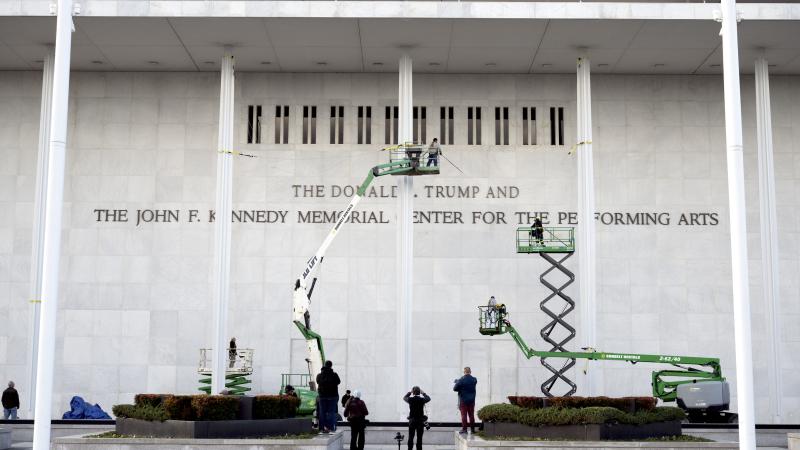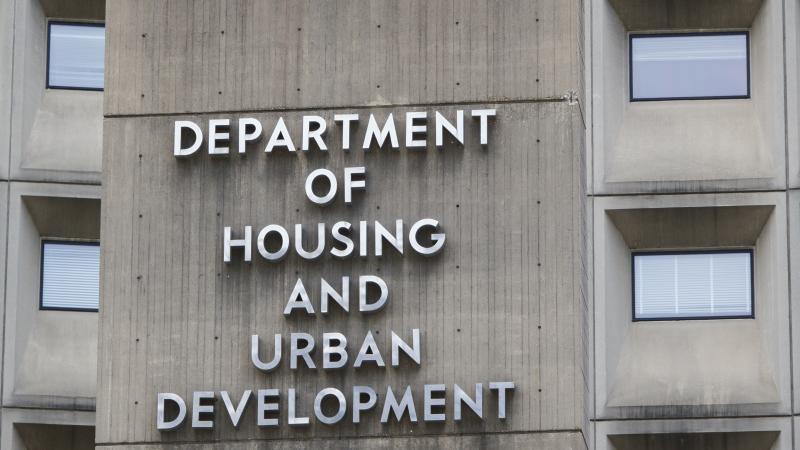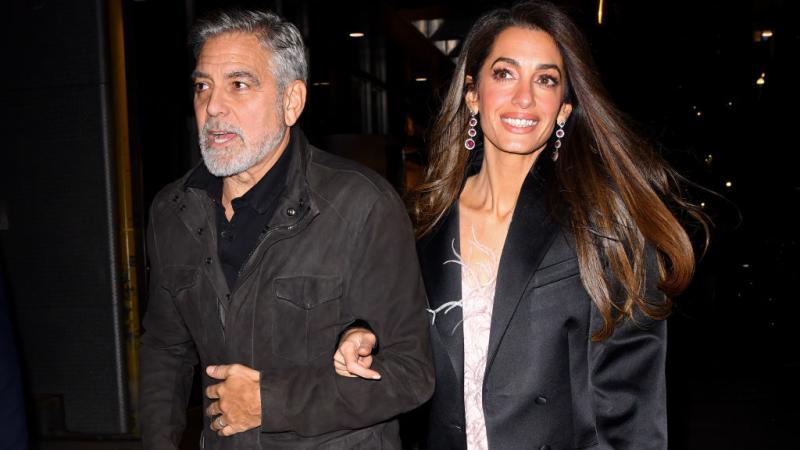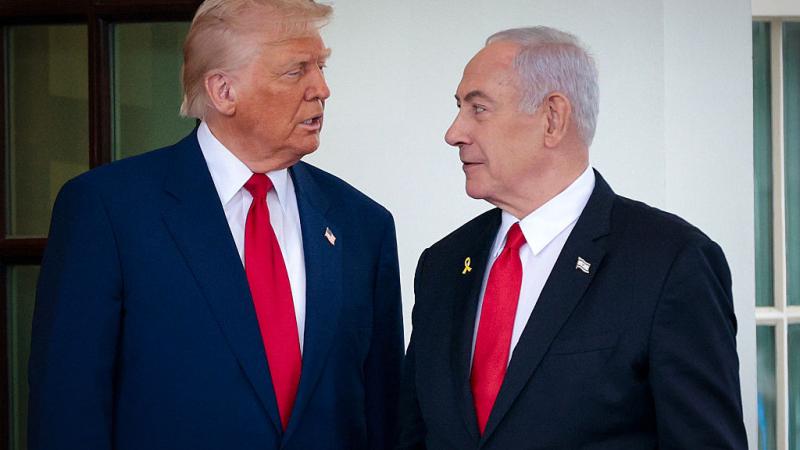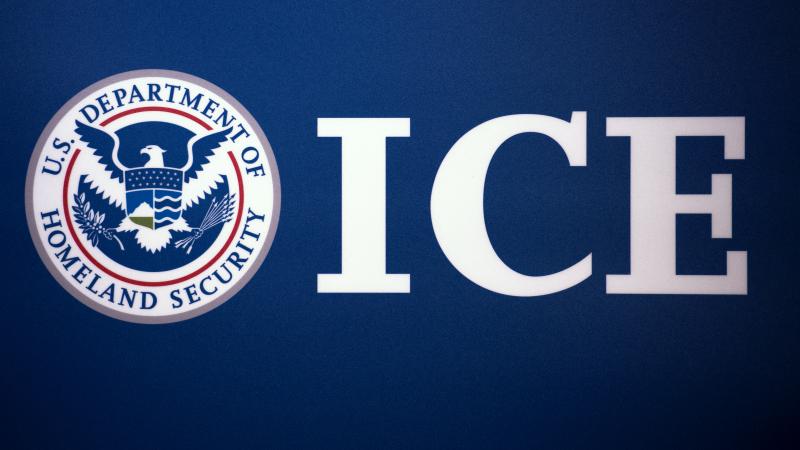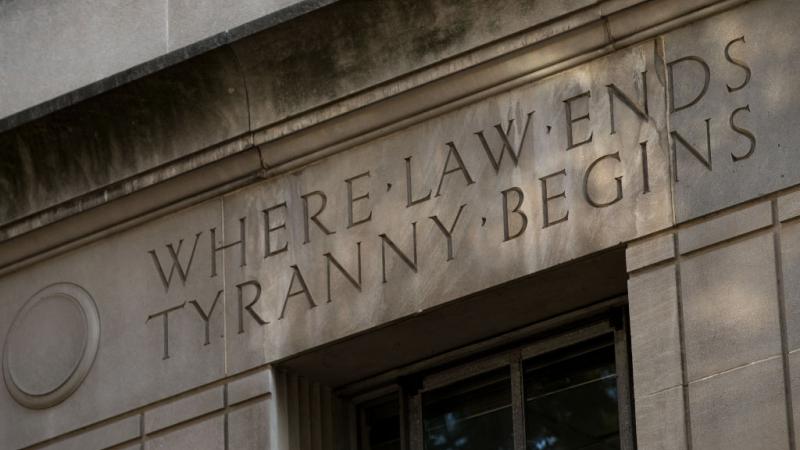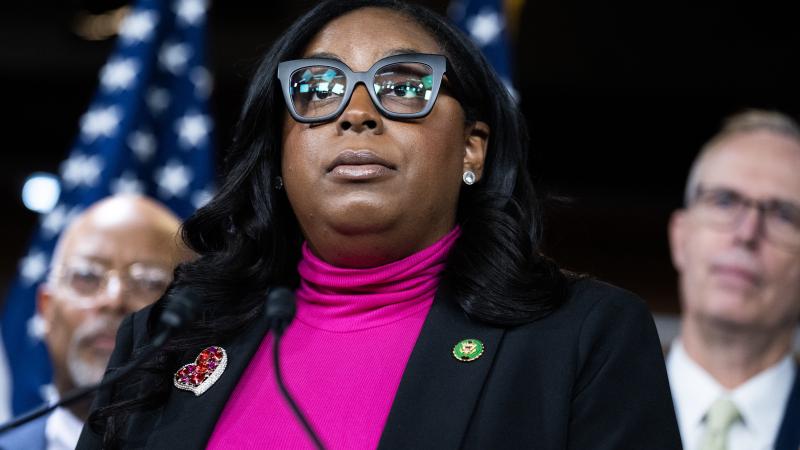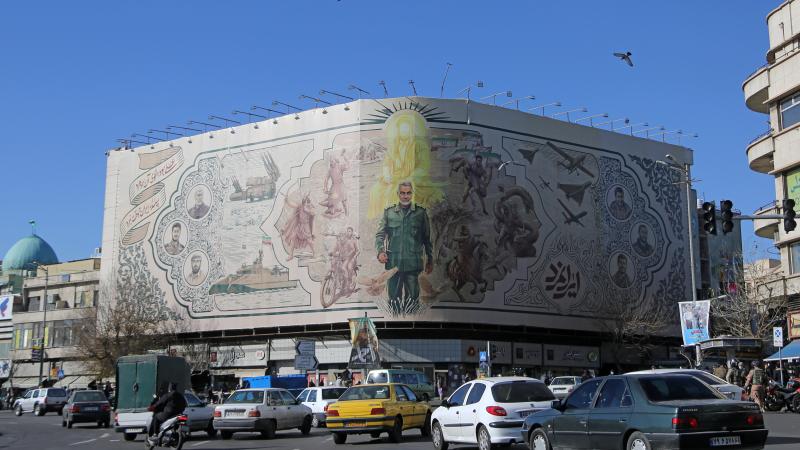Coverage of Israel war exposes news media bias, relationships with Hamas
Legacy media outlets outlets have maintained a presence in Hamas-ruled Gaza for almost the entirety of its existence. Given their reliance on local freelancers, many of who have friendly relationships with terror groups like Hamas, readers are wondering if legacy media can be trusted.
Legacy media outlets are taking flak and wrestling with tough ethical questions on how best to cover armed conflicts amid mounting scandals involving their negotiations with authoritarian regimes or terrorist governments and the use of freelancers with demonstrated biases or questionable connections to belligerent factions.
The Israeli government is fuming in the wake of revelations that legacy media outlets relied on freelancers, some of whom appeared connected to Hamas terrorists, for coverage during the Oct. 7 raid that kicked off the ongoing war in Gaza.
The National Public Diplomacy Directorate in Israel's Prime Minister's Office said in a statement issued on Thursday morning that it "views with utmost gravity that photojournalists working with international media joined in covering the brutal acts of murder perpetrated by Hamas terrorists on Saturday October 7th in the communities adjacent to the Gaza Strip."
But this latest episode merely represents the latest incident suggesting these outlets may have forged problematic relationships with terrorist organizations and their sympathizers to improve their coverage of contentious regions.
In most conflicts, global opinion and perception are vital for participants seeking either to prompt or deter foreign intervention and favorable coverage of one side, especially from nominally unbiased media outlets, can prove beneficial to those aims. Accordingly, media outlets must work toward objectivity and attempt to weed out any biases that may stem from maintaining relationships with the pivotal players or risk an overreliance on sources with a vested interest in the subject of their work.
Israeli-Palestinian tensions have sporadically erupted into larger wars since the partition of the former British Mandate of Palestine in 1948. The intermittent hostilities have effectively become a permanent fixture of the geopolitical world order. Hamas, meanwhile, is a relative newcomer to the scene, assuming power in the Gaza Strip after Israel evacuated the area in 2005. When belligerents such as Hamas are particularly ill-disposed toward journalistic activity, media outlets face limited options when seeking to report events in territories controlled by them. Often, doing so means either relying on freelancers who have better relationships with those groups or, in some instances, negotiating directly with those groups.
Legacy media outlets outlets have maintained a presence in Hamas-ruled Gaza for almost the entirety of its existence, a matter that attracted international scrutiny of their relationship with the Islamic regime following a 2021 incident in which Israeli forces destroyed a building that Hamas shared with the Associated Press for more than 15 years. Still, the AP denied any knowledge that Hamas personnel also used the building. The claim received extensive online mockery at the time and former Associated Press personnel suggested the outlet's account was inaccurate.
Media outlets relay Hamas claims uncritically
The risks of undue reporter trust in their sources and freelancers were laid bare last month amid the Israel-Hamas conflict in Gaza, with legacy media outlets based in Gaza reporting unverified claims from local officials, i.e. Hamas, that an Israeli rocket had struck a hospital in the region, resulting in hundreds dead.
Israel, for its part, had stated it was investigating the blast, and the country later concluded that the blast, which only struck the hospital's parking lot, was the result of a defective rocket from the Palestinian Islamic Jihad (PIJ) group. American officials, including President Joe Biden, have endorsed the Israeli account.
Major media outlets, including the New York Times, ran articles relaying the claims from Gaza authorities and were subsequently forced to substantially amend their posts. The Times for instance, published a lengthy Editor's Note days later stating that:
The Times's initial accounts attributed the claim of Israeli responsibility to Palestinian officials, and noted that the Israeli military said it was investigating the blast. However, the early versions of the coverage — and the prominence it received in a headline, news alert and social media channels — relied too heavily on claims by Hamas, and did not make clear that those claims could not immediately be verified. The report left readers with an incorrect impression about what was known and how credible the account was.
BBC officials, moreover, later highlighted speculation from one reporter suggesting Israel had fired the rocket.
"Mistakes happen in news reporting. It's an incredibly confusing picture with huge amounts of live broadcasting taking place. We made it very clear that we got it wrong," BBC Director of Nations Rhodri Talfan Davies said this week, according to The Sun.
The damage, however, was done. Anti-Israel riots erupted across the Middle East in response to Jerusalem's alleged attack and the amplification of the falsehood through social media and the Times' role as one of the most relied-upon newspapers in the world. Major demonstrations materialized outside the Israel embassy in Amman, Jordan; the Israeli consulate in Istanbul, Turkey; and the U.S. embassy in Beirut, Lebanon. Jordanian officials, the same day, called off a planned summit between Biden and regional leaders to discuss the ongoing conflict, without citing a reason for doing so at the time.
Far from an isolated incident, former Israeli Ambassador to the United States Michael Oren on Thursday identified what he deemed a "pervasive and multifaceted problem" of news outlets running stories on the word of terrorist groups, describing a similar 2009 case in which the Associated Press reported on the alleged destruction of a UN school.
"AP takes every word spoken by the Hamas Health Ministry, sometimes referred to as the Gaza Health Ministry... immediately reports their statistics, their version of events without any type of journalistic inspection," he said on the "Just the News, No Noise" television show.
"I had one case back in 2009, during the first round of fighting with Hamas, where the AP reported directly from the Hamas Health Ministry that an Israeli mortar shell had fallen in a UN school and killed 51 children. And that was immediately repeated around the world based on AP. And it turned out there was no mortar shell in a school, no 51 children were killed. It was a mortar shell that fell outside the school and killed nine Hamas terrorists, but none inside."
A spokesperson for Oren later confirmed to Just the News that the ambassador was referring to the al-Fakhura school incident, which took place in January 2009.
Initial accounts placed the death toll as high as 42 and stated that the shells had hit the school. The United Nations ultimately confirmed that all fatalities occurred outside of the facility and the IDF's Gaza Coordination and Liaison Administration (CLA) put the death toll at 12, including nine combatants and three noncombatants.
"And we see this again and again: 2012. The Washington Post printed... a color photograph of a Palestinian father, holding what appeared to be a bundle, surrounded by mourners the caption read, 'Palestinian father mourning the death of his infant son killed by an Israeli airstrike.' And I complained to the Washington Post about it."
"[T]hey assured me that the picture was real, because it came from the AP," he said. "Three weeks later, it was determined, believe it or not, by the UN, that the photograph was a fake."
The Associated Press later issued a correction:
An errant Palestinian rocket, not an Israeli airstrike, likely killed the child during fighting in the Hamas-ruled territory last November, a U.N. report indicated, challenging the widely believed story behind the image which became a symbol of what Palestinians said was Israeli aggression.
Oren further expressed incredulity at the continued willingness to cite the Gaza Health Ministry, asking "would any journalist who calls himself a journalist cite the ISIS health ministry as a realistic source, or the al-Qaeda health ministry?"
While bias may be ubiquitous, editors often have to work with the willing
Gaza, in particular, presents unique constraints on reporting given Hamas's control of the region and strict regulations on media coverage. Moreover, the generally pro-Hamas sentiment within the region renders it much more likely that residents with whom an outlet might maintain a professional relationship share that sentiment.
"Vetting freelancers is difficult no matter what part of the world you’re working in," Betsy Pisik, who covered the Middle East at the Washington Times for a decade, told Just the News. "You don’t know who they are until you do... If there's a bias you've got to deal with that."
"I think you can say that every journalist in every part of the world... have their own biases," she added. "Gaza is a very unique situation... in many regards, Hamas is all you've got. A lot of it comes down to the professionalism of the individual... You've got to deal with the people who you have on the ground. If you're not there, you're working with the people who are." Pisik further emphasized that while not all residents of Gaza approve of Hamas, support for the group within the region is pervasive.
The pitfalls of working with reporters and freelancers in a contentious reason have attracted attention in recent years through a slough of scandals involving the social media activity of legacy media contributors. The Associated Press in mid-October suspended its main reporter in Gaza, Issam Adwan, while it reviewed his social media posts. Adwan had openly celebrated the Oct. 7 Hamas raid, saying that "[t]he Palestinian revolt against the Israeli oppression will be a triumph sooner rather than later. No matter how strong or well-supported by the other tyrants, every colonial system will be overthrown." Also that month, he characterized Israel as a "racist regime that is so similar to the Nazis."
"I'm telling you that to reach a solution, at some point, that this apartheid regime of Israel should fall, and the land should return to its owners," he said in 2019. His suspension merely marked the latest in a string of scandals involving legacy media reporters and freelancers in the region posting antisemitic or anti-Israel content.
Days after the 2021 Israeli strike on the building housing both the AP headquarters and Hamas, CNN severed its relationship with Adeel Raja after he tweeted "[t]he world today needs a Hitler," apparently in the context of the Israel-Palestine conflict. Raja's tweet came one day after the Israeli strike. While Raja was based in Islamabad, other freelancers with more immediate connection to the Israel-Palestine conflict would eventually attract scrutiny for similar activities.
The following year, The New York Times came under fire for its relationships with at least three freelancers who appeared to have made antisemitic statements in public. In August, HonestReporting, a media watchdog focusing on the Middle East, highlighted comments from freelance producer Fady Hanona endorsing the mass execution of Jews and praising Adolf Hitler.
"The Jews are sons of the dogs... I am in favor of killing them and burning them like Hitler did. I will be so happy," she said.
Two more contributors with histories of antisemitic statements were sacked that month. Both freelance photographer Hosam Salem and Palestinian filmmaker Soliman Hijjy were discovered to have either praised Hitler or espoused antisemitic rhetoric.
"How great you are Hitler," Hijjy wrote in a 2012 post accompanying an image of the German chancellor holding an iPhone.
Pisik, for her part, suggested that such demonstrated biases by reporters and contributors would be of minimal relevance provided they relay accurate information, conduct themselves professionally, and are subject to proper oversight at the editorial level.
"Professional reporters and professional editors deal with that. I can cover all kinds of stories regardless of how I feel about some of the people involved because I'm a pro and I know how to do it right," she said. "I think that a lot of the decision rightly belongs to the editors, wherever they are. Those people have to know what their people are doing on the ground in terms of how you get the information that you get."
She further highlighted that in the case of photojournalists, especially, their biases or even vitriol would be more easily severable from their journalistic output, asserting that "[t]he images and the words can be separated." Faced with ubiquitous bias among the pool of potential contributors, she asserted it would fall to an outlet's editors to make judgement calls about with whom to work and how best to mitigate that bias.
"The editors in their offices, the executives, have to figure out their own priorities and capacity for risk," she said.
For some outlets, an editorial board may determine that the need for accurate reporting might Trump any reputational concerns about working with certain persons. The New York Times in October of this year, for example, rehired Hijjy.
"We reviewed problematic social media posts by Mr. Hijjy when they first came to light in 2022 and took a variety of actions to ensure he understood our concerns and could adhere to our standards if he wished to do freelance work for us in the future," the outlet told Fox News last month. "Mr. Hijjy followed those steps and has maintained high journalistic standards. He has delivered important and impartial work at great personal risk in Gaza during this conflict."
The use of on-site freelancers to cover the Oct. 7 raid raised questions
Reporters have long embedded themselves with military forces amid armed conflicts. Often doing so comes at great personal risk and carries the possibility of death in the war zone. American war correspondent Ernie Pyle, for instance, famously died at the hands of Imperial Japanese forces during the Battle of Okinawa in 1945.
Despite being a well-established practice, reporter proximity to a conflict's belligerents may not always be perceived as neutral matter. Bombshell reports emerged this week that contributing photographers to a litany of major outlets had documented the Oct. 7 Hamas raid on Israel resulted in furious condemnations from the Israeli government and forced the publications to deny having advance knowledge of the attack.
"These journalists were accomplices in crimes against humanity; their actions were contrary to professional ethics," Israeli Prime Minister Benjamin Netanyahu's office stated Thursday. The rampage saw terrorist forces storm Israeli border towns, seize roughly 200 hostages, and kill more than 1,200 civilians including hundreds of women and children. Major outlets such as the New York Times, the Associated Press, CNN, and Reuters covered the fallout extensively, due in part, to the assistance of on-site contributors.
Photographers Hassan Eslaiah, Hatem Ali, Yousef Masoud, and Ali Mahmud appeared in the AP's photo credits from the border region between Israel and Gaza on that day while Reuters published photos from Mohammed Fayq Abu Mostafa and Yasser Qudih, both of whom appeared to be at the border when the attack occurred. Both CNN and the AP say they have have ended their relationships with Eslaiah, of whom images with Hamas officials have since emerged.
Social media postings from HonestReporting, showed a smiling Elaiiah from the AP being kissed by Yahya Sinwar, Hamas leader and mastermind of the Oct. 7 massacre.
The AP and Reuters, issued emphatic denials of staff involvement in the raid.
"The first pictures AP received from any freelancer show they were taken more than an hour after the attacks began. No AP staff were at the border at the time of the attacks, nor did any AP staffer cross the border at any time," the AP said in a statement.
"Reuters categorically denies that it had prior knowledge of the attack or that we embedded journalists with Hamas on October 7. Reuters acquired photographs from two Gaza-based freelance photographers who were at the border on the morning of October 7, with whom it did not have a prior relationship," that outlet declared.
Oren, for his part, had harsh words for these outlets, insisting that they maintained disparate ethical standards for dealing with Hamas and Israel. He further insisted that there existed a difference between the actions of those freelancers during the Oct. 7 rampage and the traditional military embed reporters who work with the Israel Defense Forces.
"There is a distinction. We embed journalists in our troops, and they report... objectively," he insisted. "These are journalists we're talking about who were, in fact, residents of Gaza, who were, for the most part, very close to Hamas. One of them took a picture kissing the head of Hamas... There's objective journalism."
"For us, it's a completely different set of journalistic values. And yes, all of these news agencies have to be taken to task for it," Oren concluded.
Every conflict pushes ethical boundaries
The Israeli-Palestinian conflict is far from the only violent episode in which news outlets have relied on biased or questionable sourcing to provide coverage of world events. Notorious among such incidents was the New York Times's reliance on its Berlin bureau chief in the 1930's, Guido Enderis, who maintained close ties with the Nazi regime and was able to navigate the Reich's internal politics, even in the face of its notoriously strict press freedoms.
Enderis, during the 1930s, worked to minimize the outlet's coverage of the Nazi persecution of Jews, limit his own outlet's criticism of Hitler, and to publish articles that largely advanced the regime's position uncritically.
Ben Whedon is an editor and reporter for Just the News. Follow him on X, formerly Twitter.
The Facts Inside Our Reporter's Notebook
Links
- The Israeli government is fuming
- Israel's Prime Minister's Office said in a statement
- a 2021 incident
- received extensive online mockery
- Associated Press personnel suggested
- country later concluded
- President Joe Biden
- a lengthy Editor's Note
- Anti-Israel riots erupted
- called off a planned summit
- The Washington Post printed
- Adwan had openly celebrated the Oct. 7 Hamas raid
- CNN severed its relationship with Adeel
- HonestReporting highlighted comments
- Two more contributors with histories
- the outlet told Fox News
- American war correspondent Ernie Pyle
- Netanyahu's office stated Thursday
- X,


